Potrebujeme váš súhlas na využitie jednotlivých dát, aby sa vám okrem iného mohli ukazovať informácie týkajúce sa vašich záujmov. Súhlas udelíte kliknutím na tlačidlo „OK“.
ASTM E112-13
Standard Test Methods for Determining Average Grain Size
Automaticky preložený názov:
Štandardné skúšobné metódy pre stanovenie priemernej veľkosti zrna
NORMA vydaná dňa 1.10.2013
Informácie o norme:
Označenie normy: ASTM E112-13
Poznámka: NEPLATNÁ
Dátum vydania normy: 1.10.2013
Kód tovaru: NS-40526
Počet strán: 28
Približná hmotnosť: 84 g (0.19 libier)
Krajina: Americká technická norma
Kategória: Technické normy ASTM
Kategórie - podobné normy:
Anotácia textu normy ASTM E112-13 :
Keywords:
ALA grain size, anisotropy index, area fraction, ASTM grain size number, calibration, equiaxed grains, etchant, grain boundary, grains, grain size, intercept count, intercept length, intersection count, non-equiaxed grains, twin boundaries, ICS Number Code 77.040.01 (Testing of metals in general)
Doplňujúce informácie
| Significance and Use | |||||||||||||||||||||||||||||||||||||||||||||||||||||||||||||||||||||||||||||||
|
4.1 These test methods cover procedures for estimating and rules for expressing the average grain size of all metals consisting entirely, or principally, of a single phase. The grain size of specimens with two phases, or a phase and a constituent, can be measured using a combination of two methods, a measurement of the volume fraction of the phase and an intercept or planimetric count (see Section 17). The test methods may also be used for any structures having appearances similar to those of the metallic structures shown in the comparison charts. The three basic procedures for grain size estimation are: 4.1.1 Comparison Procedure—The comparison procedure does not require counting of either grains, intercepts, or intersections but, as the name suggests, involves comparison of the grain structure to a series of graded images, either in the form of a wall chart, clear plastic overlays, or an eyepiece reticle. There appears to be a general bias in that comparison grain size ratings claim that the grain size is somewhat coarser (1/2 to 1 4.1.2 Planimetric Procedure—The planimetric method involves an actual count of the number of grains within a known area. The number of grains per unit area, NA , is used to determine the ASTM grain size number, G. The precision of the method is a function of the number of grains counted. A precision of ±0.25 grain size units can be attained with a reasonable amount of effort. Results are free of bias and repeatability and reproducibility are less than ±0.5 grain size units. An accurate count does require marking off of the grains as they are counted. 4.1.3 Intercept Procedure—The intercept method involves an actual count of the number of grains intercepted by a test line or the number of grain boundary intersections with a test line, per unit length of test line, used to calculate the mean lineal intercept length, 4.2 For specimens consisting of equiaxed grains, the method of comparing the specimen with a standard chart is most convenient and is sufficiently accurate for most commercial purposes. For higher degrees of accuracy in determining average grain size, the intercept or planimetric procedures may be used. The intercept procedure is particularly useful for structures consisting of elongated grains (see Section 4.3 In case of dispute, the planimetric procedure shall be the referee procedure in all cases. 4.4 No attempt should be made to estimate the average grain size of heavily cold-worked material. Partially recrystallized wrought alloys and lightly to moderately cold-worked material may be considered as consisting of non-equiaxed grains, if a grain size measurement is necessary. 4.5 Individual grain measurements should not be made based on the standard comparison charts. These charts were constructed to reflect the typical log-normal distribution of grain sizes that result when a plane is passed through a three-dimensional array of grains. Because they show a distribution of grain dimensions, ranging from very small to very large, depending on the relationship of the planar section and the three-dimensional array of grains, the charts are not applicable to measurement of individual grains. |
|||||||||||||||||||||||||||||||||||||||||||||||||||||||||||||||||||||||||||||||
| 1. Scope | |||||||||||||||||||||||||||||||||||||||||||||||||||||||||||||||||||||||||||||||
|
1.1 These test methods cover the measurement of average grain size and include the comparison procedure, the planimetric (or Jeffries) procedure, and the intercept procedures. These test methods may also be applied to nonmetallic materials with structures having appearances similar to those of the metallic structures shown in the comparison charts. These test methods apply chiefly to single phase grain structures but they can be applied to determine the average size of a particular type of grain structure in a multiphase or multiconstituent specimen. 1.2 These test methods are used to determine the average grain size of specimens with a unimodal distribution of grain areas, diameters, or intercept lengths. These distributions are approximately log normal. These test methods do not cover methods to characterize the nature of these distributions. Characterization of grain size in specimens with duplex grain size distributions is described in Test Methods E1181. Measurement of individual, very coarse grains in a fine grained matrix is described in Test Methods E930. 1.3 These test methods deal only with determination of planar grain size, that is, characterization of the two-dimensional grain sections revealed by the sectioning plane. Determination of spatial grain size, that is, measurement of the size of the three-dimensional grains in the specimen volume, is beyond the scope of these test methods. 1.4 These test methods describe techniques performed manually using either a standard series of graded chart images for the comparison method or simple templates for the manual counting methods. Utilization of semi-automatic digitizing tablets or automatic image analyzers to measure grain size is described in Test Methods E1382. 1.5 These test methods deal only with the recommended test methods and nothing in them should be construed as defining or establishing limits of acceptability or fitness of purpose of the materials tested. 1.6 The measured values are stated in SI units, which are regarded as standard. Equivalent inch-pound values, when listed, are in parentheses and may be approximate. 1.7 This standard does not purport to address all of the safety concerns, if any, associated with its use. It is the responsibility of the user of this standard to establish appropriate safety and health practices and determine the applicability of regulatory limitations prior to use. 1.8 The paragraphs appear in the following order:
|
Podobné normy:
Historická
1.9.2012
Historická
1.10.2009
Historická
1.11.2013
Historická
1.7.2014
Historická
1.12.2008
Historická
1.7.2007
Odporúčame:
Aktualizácia technických noriem
Chcete mať istotu, že používate len platné technické normy?
Ponúkame Vám riešenie, ktoré Vám zaistí mesačný prehľad o aktuálnosti noriem, ktoré používate.
Chcete vedieť viac informácií ? Pozrite sa na túto stránku.


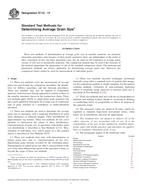
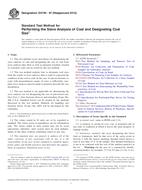 ASTM D4749-87(2012)..
ASTM D4749-87(2012)..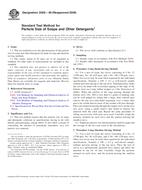 ASTM D502-89(2009)..
ASTM D502-89(2009)..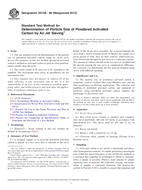 ASTM D5158-98(2013)..
ASTM D5158-98(2013)..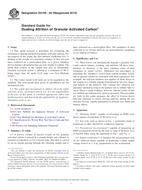 ASTM D5159-04(2014)..
ASTM D5159-04(2014)..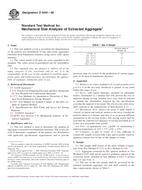 ASTM D5444-08
ASTM D5444-08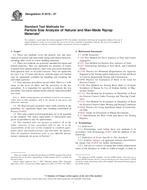 ASTM D5519-07
ASTM D5519-07
 Cookies
Cookies
